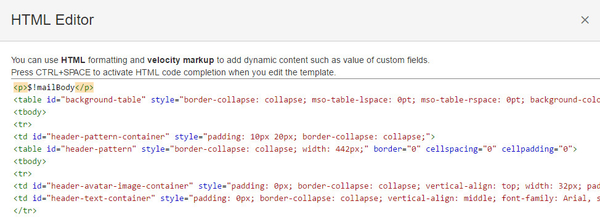| Table of Contents |
|---|
...
In case the Rich Text Editor would not be sufficient or you prefer tweak HTML directly, just open the HTML Editor and make changes directly to the source code of the template.
Embedding images
You can tell JETI to embed an image targeted by a URL on <img> tag level. This way you can send out attachments of the issue, and the recipient does not need to connect (hence don't need to create a Jira user account) to see the attachment.
To achieve this, just add the data-embed="true" attribute to the <img> element.
Eg:
| Code Block | ||||
|---|---|---|---|---|
| ||||
<img src="https://www.meta-inf.hu/download/attachments/35749899/icon_product_jeti.png?version=1&modificationDate=1524212907169&api=v2" data-embed="true"> |
This will cause that the image will be downloaded and attached to the email.
Text Body Template
Text Body Template part is used to send pure text emails with this email template.
...
| Macro signature | Parameters | Description | Example |
|---|---|---|---|
| #renderDateTime($dateTimeValue $pattern $timezone) |
| Formats a dateTime field based on the pattern and the timezone. | #renderDateTime($!issue.created "dd MMM yyyy hh:mm a" "Australia/West") |
| #renderLinkToPortal($linkText) |
| renders a link to the portal with a custom text. | #renderLinkToPortal("View Customer Portal") |
| #renderLinkToPortalRequest($linkText) |
| renders a link to the request with a custom text. | #renderLinkToPortalRequest("Open request") |
| #renderAllComments($comments) |
| Renders all comments (both public and internal) comments | #renderAllComments($!issue.comments) |
| #renderComments($comments) |
| Renders the public comments | #renderComments($!issue.comments) |
| #renderCommentsInReverseOrder($comments) |
| Renders the public comments in reverse order | #renderCommentsInReverseOrder($!issue.comments) |
| #renderCustomField($issue $customFieldKey) |
| Renders the value of the custom field as displayed in jira | #renderCustomField($!issue, 'customfield_10603') |
| #renderLastComment($issue) |
| Renders the last comment of the issue | #renderLastComment($!issue) |
...
